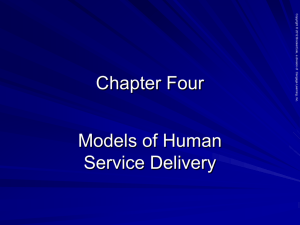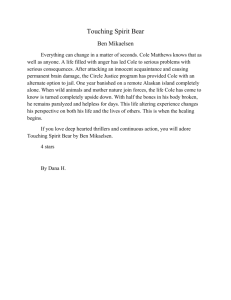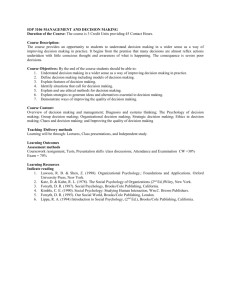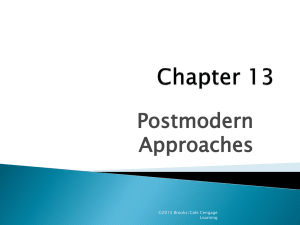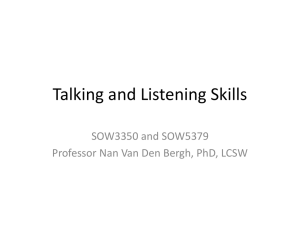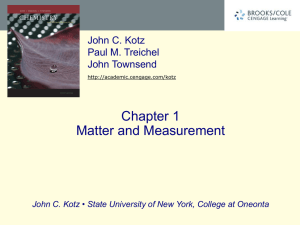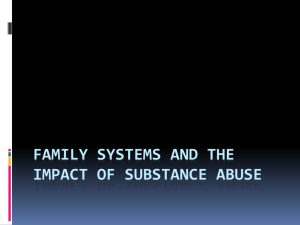Career Counseling-A Hollistic Approach (2)
advertisement
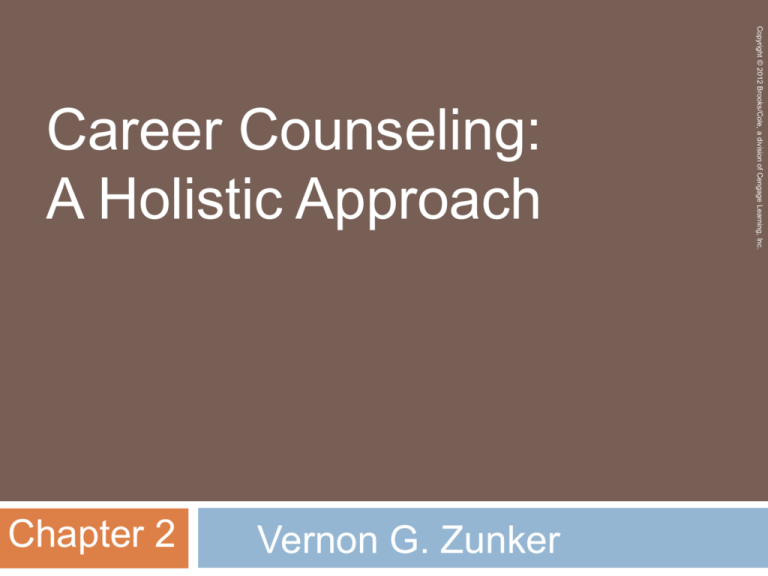
Vernon G. Zunker Chapter 2 Copyright © 2012 Brooks/Cole, a division of Cengage Learning, Inc. Career Counseling: A Holistic Approach Trait-and-Factor Theory Social Learning and Cognitive Theories Developmental Theories Person-in-Environment Perspective Copyright © 2012 Brooks/Cole, a division of Cengage Learning, Inc. Chapter 2: Theories of Career Development Among the earliest theories Vocational guidance is accomplished by studying the individual, then surveying occupations, then matching the individual with the occupation. Became the foundation of programs in the early 20th century. Copyright © 2012 Brooks/Cole, a division of Cengage Learning, Inc. Trait-and-Factor Theory Also called the Theory of Work Adjustment The broader level of Person-EnvironmentCorrespondence was added in 1991. PEC theory emphasizes that work is more than a task-oriented procedure, and that it includes human interactions; sources of stress and rewards and many other psychological variables. Copyright © 2012 Brooks/Cole, a division of Cengage Learning, Inc. Person-Environment-Correspondence (PEC) Counseling Proposed that personality types can be arranged in a coded system. His modal-personal-orientation themes such as R (realistic occupation), I(investigative), A(artistic), S(social), E(enterprising), and C(conventional) comprise his main theory Copyright © 2012 Brooks/Cole, a division of Cengage Learning, Inc. Holland’s Model Copyright © 2012 Brooks/Cole, a division of Cengage Learning, Inc. Holland’s model of personality types and occupational environments Copyright © 2012 Brooks/Cole, a division of Cengage Learning, Inc. Steps in using the SDS These theories focus on a wide range of variables that affect career choice and career maintenance over the life span. Social conditioning, social position, and life events are thought to significantly influence career choice. Individuals are thought to be influenced by many factors including genetic endowments and special abilities, contextual experiences, learning experiences and skills learned. Copyright © 2012 Brooks/Cole, a division of Cengage Learning, Inc. Social Learning and Cognitive Theories Krumboltz’s Learning Theory of Career Counseling First proposed in 1975 LTCC (Learning Theory of Career Counseling) Based primarily on life events that are influential in determining career selection. Happenstance Approach Theory The primary premise suggests that chance events over one’s life span can have both positive and negative consequences. Copyright © 2012 Brooks/Cole, a division of Cengage Learning, Inc. Social Learning Theories Cognitive Informational Processing (CIP) Applied to career development in terms of how individuals make a career decision and use information in career problem solving and decision making. The major strategy of career intervention is to provide learning events that will develop the individual’s processing abilities. Copyright © 2012 Brooks/Cole, a division of Cengage Learning, Inc. Cognitive Information Processing Perspective The study of cognitive variables and processes has become a popular topic for researchers, who apply these to the study of career development. Key Constructs include Self Efficacy, Outcome Expectations and Personal Goals. These are considered the “big three.” Copyright © 2012 Brooks/Cole, a division of Cengage Learning, Inc. Social Cognitive Perspective Career development is viewed as a lifelong process that is very inclusive. Suggests that individuals make changes during developmental stages and adapt to changing life roles. Individuals project self into work environments. A system of developmental tasks over the life span provides key points for counseling interventions. Copyright © 2012 Brooks/Cole, a division of Cengage Learning, Inc. Developmental Theories Copyright © 2012 Brooks/Cole, a division of Cengage Learning, Inc. The life-career rainbow: Six life roles in schematic life space of career development Copyright © 2012 Brooks/Cole, a division of Cengage Learning, Inc. A segmental model Focuses attention on contextual interaction over the life span. Clients are viewed as products of an environment that is very inclusive but also unique. Several environmental systems such as family, church, neighborhood, friends, workplace, community agencies, etc., all affect work choice. Copyright © 2012 Brooks/Cole, a division of Cengage Learning, Inc. Person-in-Environment Perspective Copyright © 2012 Brooks/Cole, a division of Cengage Learning, Inc. Ecological systems map




